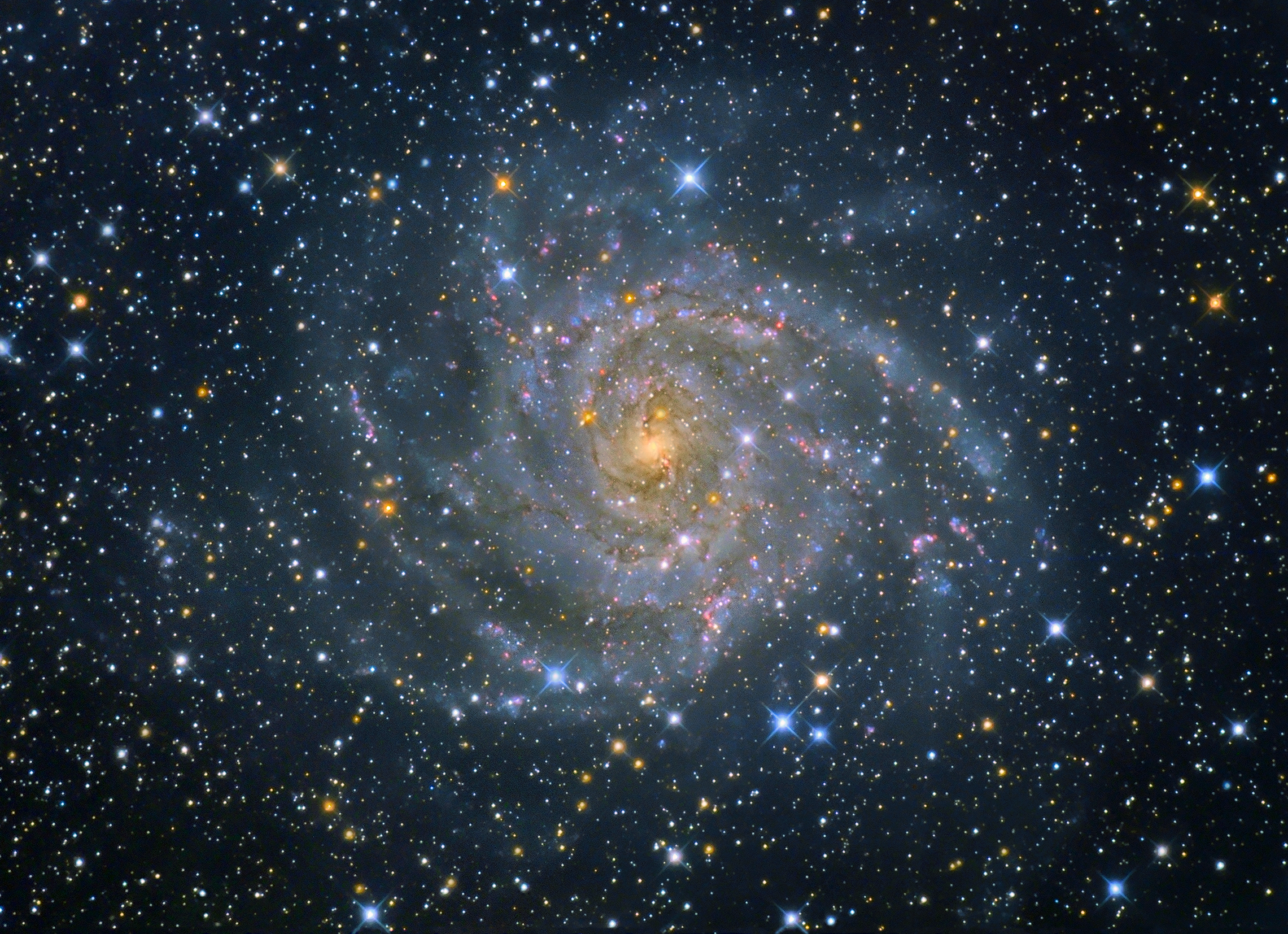Science
Related: About this forumHow Many Galaxies Are There? Astronomers Are Revealing the Enormity of the Universe
The universe is awash in islands of matter — some 100 billion galaxies make up the basic building blocks of the cosmos.
By David J EicherMay 19, 2020 12:00 PM

At 11 million light-years away, IC 342 is a close galaxy. It’s also a member of a loose group along with several others.
IC 342 has a low surface brightness and lies in Camelopardalis, near the plane of the Milky Way in our sky. So it’s a little difficult for amateur astronomers to spot, despite its elegant form. (Credit: Tony Hallas)
On the evening of Oct. 4, 1923, near Los Angeles, a young astronomer got into his car and began a motorized trek up to Mount Wilson. There, he arrived at the observatory that housed the 100-inch Hooker Telescope, at the time the largest telescope in the world.
Edwin Hubble was a fourth-year astronomer at Mount Wilson; he enjoyed using the Hooker Telescope because he was interested in, among other things, studying spiral “nebulae.” These mysterious gas clouds were scattered across the sky, and no one understood their nature. In the early days of the 1920s, Hubble had assigned himself the task of figuring them out.
He pointed the great telescope toward his favorite object: the nebula in Andromeda, M31. This spiral-shaped cloud is faintly visible to the naked eye under a clear, moonless sky. He then captured its image on a photographic plate. Hubble was excited by the result. On it, he found a suspected nova, an exploding star. The next night, he photographed M31 again, hoping to catch the nova and record it under better atmospheric stability. The second plate did indeed record the nova, but little did he know, he also had captured a plate that would become legendary in the history of science.

Astronomer Edwin Hubble made an exposure of the “Andromeda Nebula”
with the Hooker Telescope at Mount Wilson Observatory near Los Angeles
on Oct. 5, 1923. He was initially excited, believing he had recorded a nova,
an exploding star. He marked the star, which lies between two tick marks he
drew at the top right on the plate, with the letter N. The star turned out to
be a Cepheid variable, and Hubble used it to prove that the distance to the
Andromeda Galaxy was far greater than astronomers thought.
(Credit: Courtesy of the Carnegie Observatories/Cindy Hunt)
His observing time over, he returned to his office to analyze the catch. Suddenly, Hubble made an astonishing realization: The nova was not a nova at all, but a particular type of star that changed its brightness, a Cepheid variable. Checking earlier plates, he was able to confirm that, and he realized that the star’s faintness had incredible implications.
More:
https://www.discovermagazine.com/the-sciences/how-many-galaxies-are-there-astronomers-are-revealing-the-enormity-of-the
ZZenith
(4,115 posts)Let’s see.....carry the one......and......
Holy shit.
10,000,000,000,000,000,000,000 stars in The Universe.
Crikey, that’s a lot of stars - makes my head hurt.
Igel
(35,274 posts)You should say "in The Visible Universe."
If the universe is infinite, as usually claimed, then your 10,000,000,000,000,000,000,000 stars as a percentage of the actual number of stars is pretty much 0.
limit as x --> infinity, 10,000,000,000,000,000,000,000 stars / x --> 0.